I was on my way back from a fantastic hiking from Mullayyangiri , highest peak in Karnataka state I saw hundreds of goats and sheep along with donkeys and dogs in the fields and few men standing in between . I have seen them before and always wanted to talk to them. So I pulled over my car and started conversation with them. Few minutes of talk revealed interesting facts and searched all over the internet to find out more about it after I got back home .
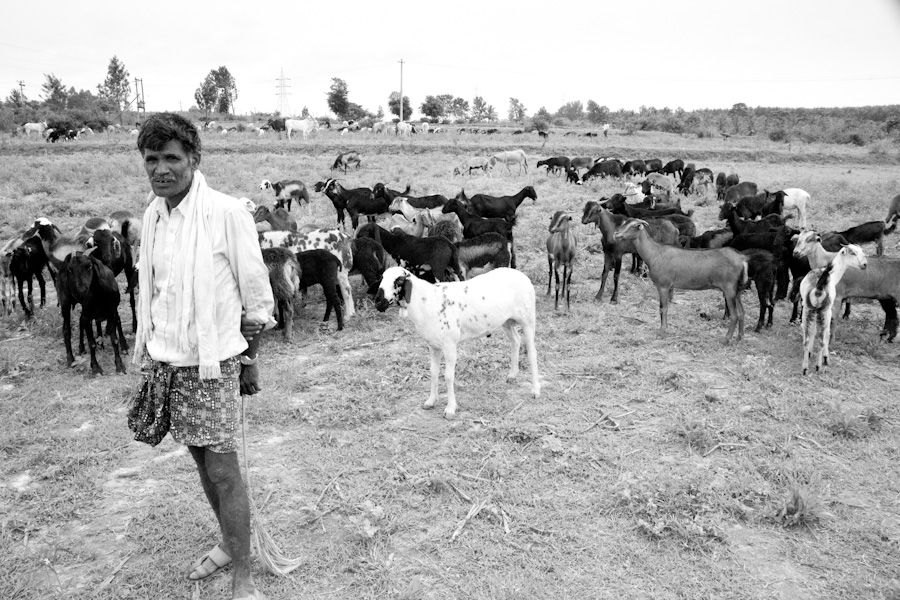
Narnappa is a shepherd from Hiriyur village of Chitradurga district in KA ( kuruba ) who usually leaves his home for 5 months in a year with his family and sheep in search of livestock for his cattle . He is accompanied by 30 members of his family including brothers wives and kids and his cattle. His cattle herd is of around 1000 sheep and goats , 10-15 donkeys to carry tent and cooking equipment , dogs . He leaves his village January when greenery fades and reaches Chikkamagalur by March covering 200kms distance by just walking. They travel in days and tent in nights . Then they start heading towards their village by May and reach by June when the greenery is almost back in his village due to monsoon rains! What a challenging life I thought!
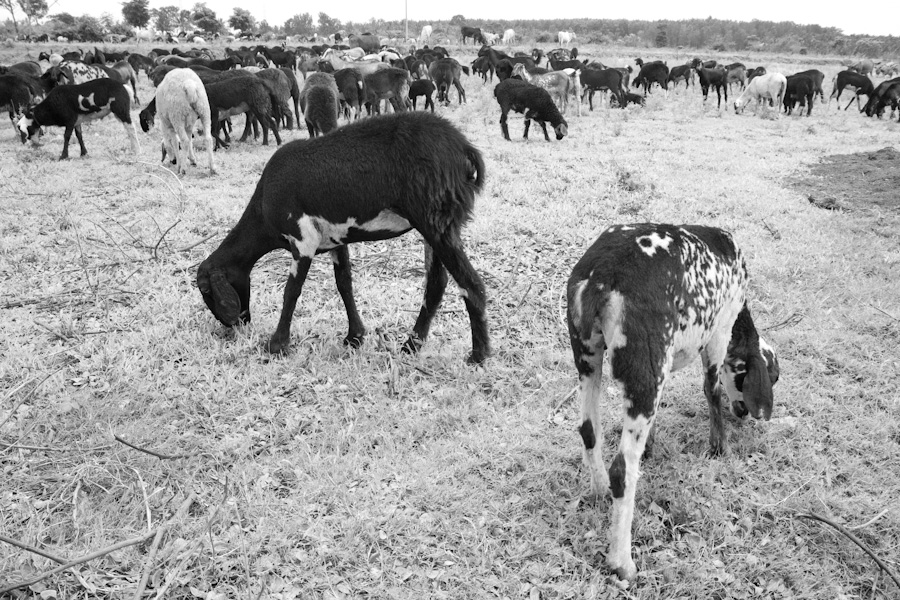
This is called pastoralism by the university people , very common in India . In the Indian context Pastoralism is defined as ” members of caste or ethnic groups with a strong traditional association with livestock-keeping, where a substantial proportion of the group derive over 50% of household consumption from livestock products or their sale , and where 90% of animal consumption from natural pasture or browse , and where households are responsible for the fill livestock breeding” ( source: Pastoralism in India: A scoping study by Vijay Paul Sharma Ilse Kohler and John Morton)
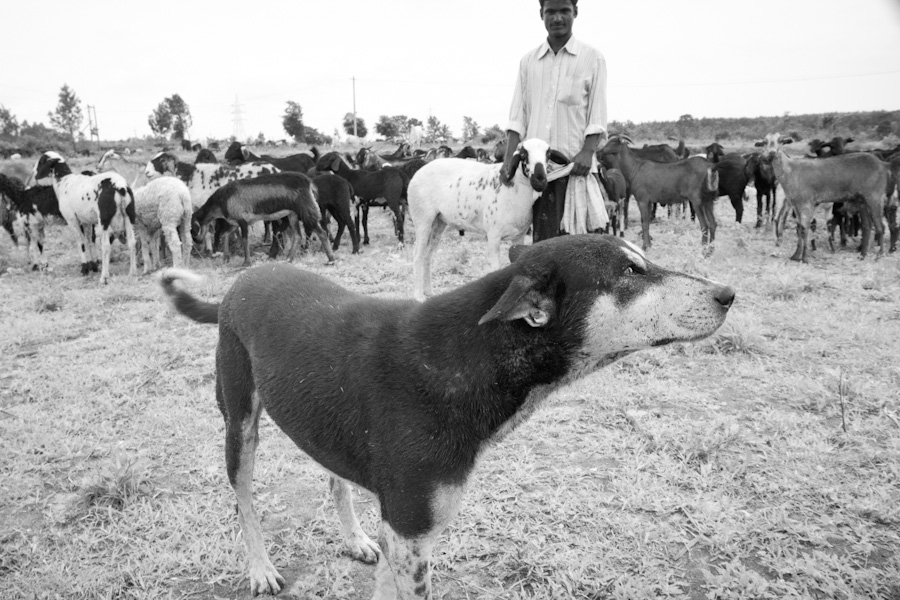
This is seen in Himalayas , North Karnataka, Andrapradesh , Arunachal Pradesh, Gujarath, Keral, Madya Pradesh, Maharashtra , Rajasthan and Tamilnaadu states. This group I met is form North Karnataka and the main community following pastoralism is Kurubas ( shepherds ) .
There will be one head for the herd . One heard consists of 800- 1200 sheep and goats , 30-45 people which includes 4-5 leaders, 4-5 elders , women and children , 4-5 dogs , 10 donkeys to carry things , 5-10 cattle. Mostly these people are uneducated and away from the modernism.
When I was talking to them I found out they were really nice people and enjoyed my short photography . When they saw their sheep and themselves in my camera LCD I will never forget their smiles and shine in the eyes . I cannot imagine how challenging their life will be but one day I want to explore.
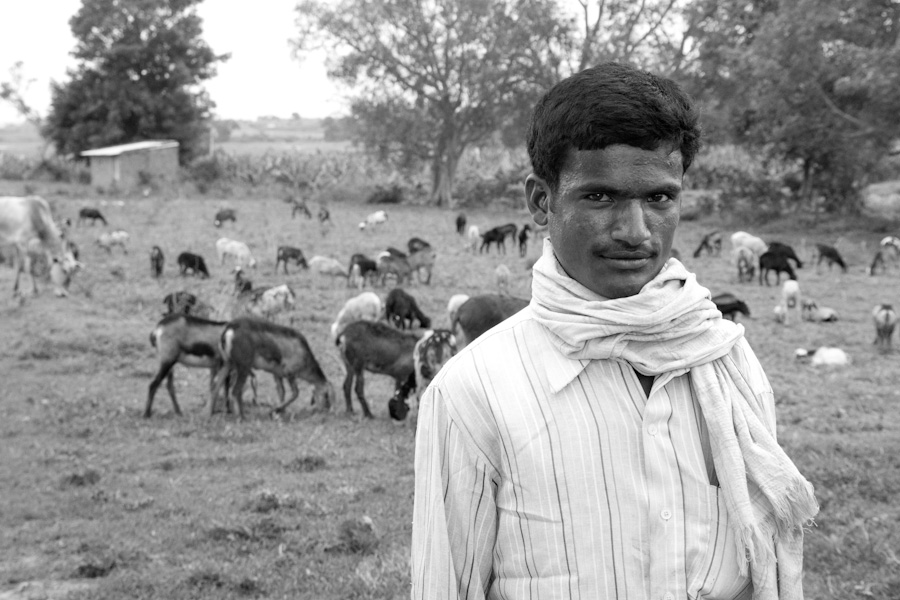
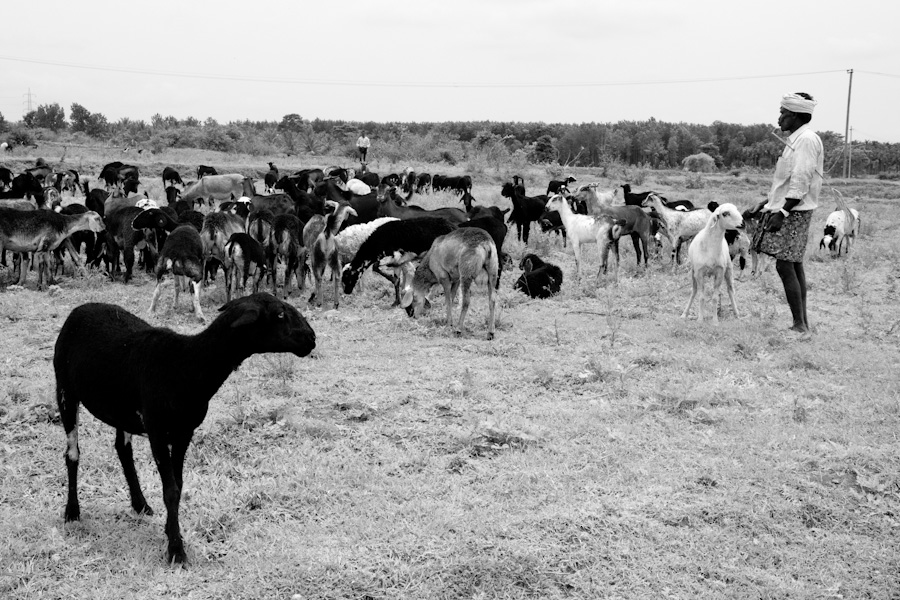
6 Comments
Comments are closed.
interesting..
thanks Vinayak
Nice photo essay, Dinesh. I am curious to know if they sell animal products like wool or milk, and if they do, how does it work for these wandering group?
thanks Indranil, yes that always will be part of there life. Hopefully next year I am exploring more and covering more as well
Always interesting to read about other cultures and I’m also a little jealous of people who lead traditional ways of life, away from the city and out in fresh air, in contact with the earth much more so than I get to be. Though I realise they work hard, I’m sure that this does not make them unhappy. Great post 🙂
thanks a lot Paul, I totally agree with you 🙂